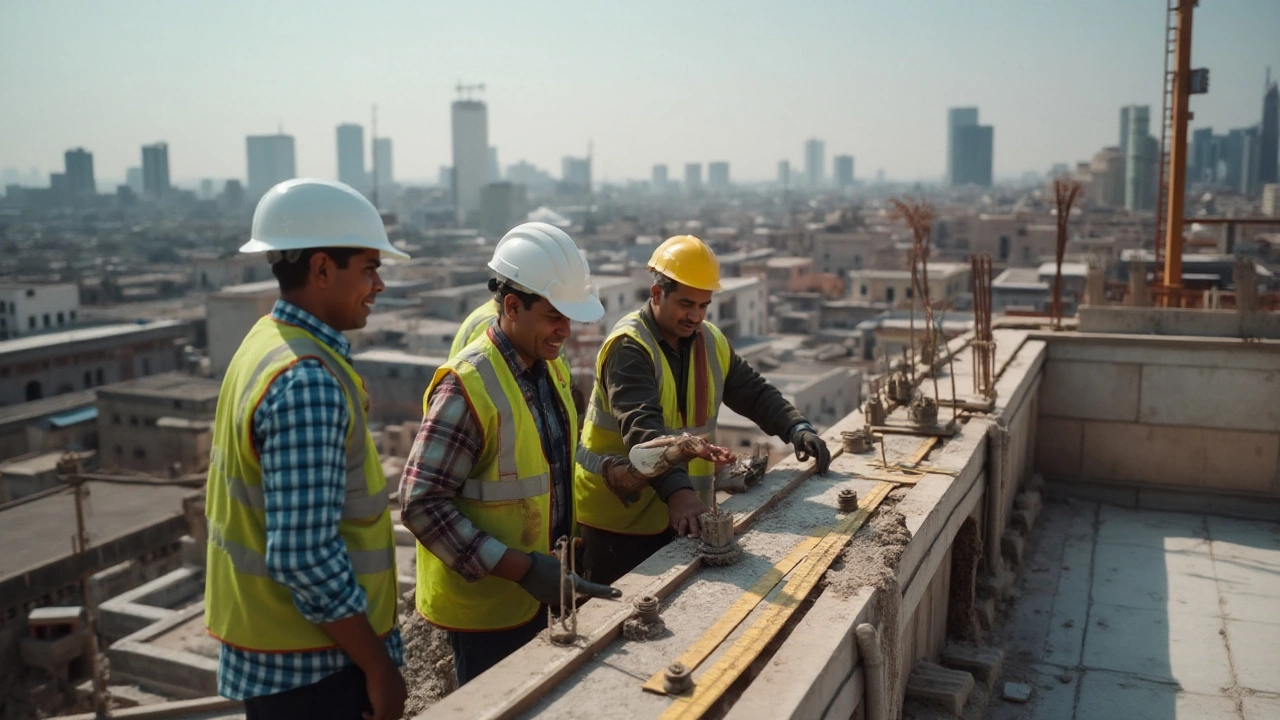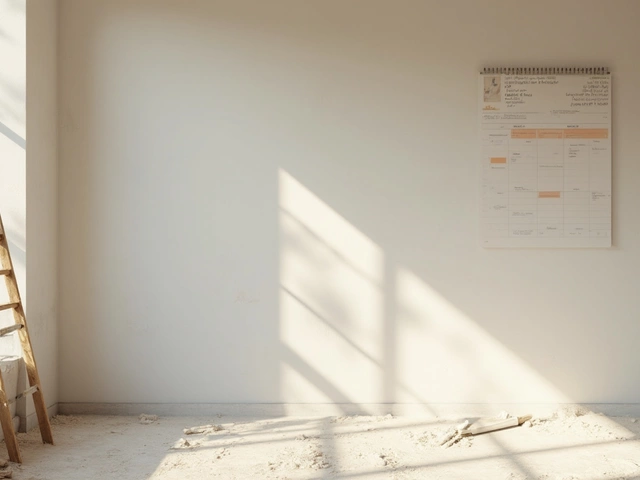Building a new home is an exciting journey, but it comes with its own set of challenges. One of the biggest concerns for homeowners is the risk of major structural defects. These are not just minor inconveniences; they can severely compromise the safety and comfort of your home. Understanding what constitutes a major defect and how to identify it early can save you from a lot of stress and financial burden.
Structural integrity is the backbone of any well-built house. Issues such as foundation flaws or compromised wall and roof structures can spell disaster if not addressed. It's essential for homeowners to be well-informed about what to look out for in new constructions. This knowledge empowers you to tackle problems head-on or even avoid them altogether by ensuring quality standards are met from the start.
In this guide, we will explore some of the most common major structural defects found in new builds. We'll offer valuable insights into spotting these issues and provide advice on how to ensure your new home is as sturdy and secure as it should be.
- Foundation Flaws
- Wall and Roof Integrity
- Waterproofing and Drainage
- Quality Assurance and Prevention
Foundation Flaws
Foundation flaws in new builds represent a significant issue that can lead to numerous other structural problems. Think of the foundation as the bedrock that supports every part of your home. If it is defective or compromised, it can set off a cascade of issues, from slanting floors to cracked walls, and even affect the integrity of the roof. One common type of foundation flaw is settling, which can occur when the ground beneath the house was not properly prepared before construction began. Over time, the soil can shift due to moisture changes or erosion, causing the house to settle unevenly. This is particularly problematic in areas prone to heavy rains or droughts where soil moisture levels can fluctuate dramatically.
Another common issue with foundations is the use of subpar materials or improper mixing of concrete. The quality of concrete is vital, as it needs to support the weight of the entire structure. If the concrete mixture is too weak, it can crack under pressure, leading to major structural defects. Contractors must follow strict guidelines to ensure the mixture has the right consistency and curing time to develop adequate strength. Regular inspections during the process can help spot potential flaws early on, allowing for timely corrections and preventing more severe consequences down the line. To illustrate the importance of foundational quality, a report from the Building Research Association of New Zealand notes that proper soil testing and adherence to building codes significantly reduce the risk of foundational defects.
Signs of Foundation Problems
Identifying the signs of foundation problems early can save homeowners from larger repairs and safety hazards. One sign is the presence of cracks in the walls or floors. Though minor hairline cracks are common and often not alarming, larger or widening gaps could indicate a shifting foundation. Another sign is doors and windows that do not open or close easily. This can happen because the frames have become misaligned due to the gradual settling of the building. Pay attention to any tilting or unevenness in the floors, as this might also be a clear indicator of foundational issues.One actionable approach when dealing with potential foundation problems is to consult with a structural engineer who can assess the situation accurately. They possess specialized knowledge to identify issues that might not be immediately visible to the untrained eye. Using their expertise, they can suggest appropriate solutions, such as underpinning which involves strengthening an existing foundation by extending it deeper into more stable soil layers. For homeowners building new, it is wise to invest not only in quality materials but also in skilled and reputable builders. As with many facets of construction, prevention is far more cost-effective than correction. Foundation flaws warrant your attention and understanding to ensure the longevity and safety of your new home.

Wall and Roof Integrity
When it comes to ensuring the durability and safety of a new house, the integrity of its walls and roof is paramount. These components of a building bear the brunt of environmental elements, shielding interiors from the whims of Mother Nature. Issues here can lead not only to hefty repair bills but also to severe safety risks. Walls that develop cracks or roofs that leak can implicate a host of structural problems, ranging from compromised insulation to mold growth. It's crucial to understand the common signs of damage and how to prevent them.
The structural defects in walls often manifest as cracks. Whether they're small or large, these fissures can signal underlying problems with the framework of the house. Identifying the type of crack can speak volumes; for instance, vertical cracks might suggest settling issues, whereas horizontal cracks could indicate pressure from soil or water. During construction, ensuring walls are built with quality materials and proper reinforcement can often mitigate these issues. Regular inspections post-construction can catch early signs of distress before they escalate into significant problems.
Roofing Concerns
Roofs are another critical component where structural issues can emerge. Due to their exposure, roofs are susceptible to a greater degree of wear and tear. Whether it’s damage inflicted by harsh sunlight or the relentless battering of rain and wind, these problems can quickly spiral. One common issue is leakage, often resulting from improper installation or inadequate waterproofing measures. Using durable materials, like metal or tiles, can provide better endurance against the elements. A proper slope must also be ensured during the construction phase to facilitate water run-off and prevent pooling, which is a primary cause of leaks.
Regrettably, the quality of the workmanship can majorly influence the structural integrity of the roof. According to a report by the New Zealand Building Industry, "An estimated 30% of new builds experience significant roof-related issues within the first five years of construction."
"Many of these problems stem from poor design and the use of substandard materials, emphasizing the need for choosing reputable contractors," notes an expert from the Building Industry.Ensuring contractors adhere to building codes and using the best practices can greatly reduce the need for repairs. Homeowners should not just trust but verify the credentials of those they hire.
Preventive Measures and Inspections
Preventive actions are the best way to maintain wall and roofing integrity. Regular maintenance checks, particularly after severe weather events, can help identify problems early. Yearly inspections by certified professionals can ensure any early signs of damage are caught. Homeowners are also advised to pay attention to small signs: stains on ceilings might indicate a leak, and cracks in the wall could suggest structural shifts. Vigilance in these assessments can save both money and stress in the long run.
In addition to hiring experienced professionals for both building and repairs, maintaining good-quality gutters and water drainage systems can alleviate excess moisture pressure on the roof and walls, which prevents the risk of related structural defects. Combining these strategies with strong, healthy practices in home maintenance ensures safety and a cozy, worry-free living space.

Waterproofing and Drainage
Ensuring effective waterproofing and drainage is a critical aspect of home construction, often overlooked until substantial damage arises. It's vital for homeowners to pay close attention to these elements, as they play a pivotal role in maintaining the structural integrity of the building. Water can be an insidious enemy, silently wreaking havoc on walls, flooring, and foundations. Poor waterproofing can lead to dampness, mold growth, and even foundation instability. Left unchecked, these issues not only compromise the safety of your home but can also lead to expensive repairs.
Correct drainage systems are essential to divert water away from the home effectively. During heavy rainfall, efficient drainage can prevent water from pooling around the house, which minimizes the risk of seepage into the foundation or basement. It is one of those 'out of sight, out of mind' concerns, where improper installation or maintenance becomes evident only after water starts to invade living spaces. Experts like the Building Research Association of New Zealand stress the importance of planning a draining strategy that takes local climate and land gradients into account, ensuring long-lasting efficacy.
One cannot overemphasize the importance of selecting quality materials and hiring experienced contractors for waterproofing solutions. The choice ranges from membranes for underground insulation to sealants for walls and flooring. Each material serves a specific purpose, and its application must be precise to achieve the best results. Homeowners should also consider future-proofing their investments by adopting cutting-edge technologies, which introduce advanced polymers and systems that offer better protection against water infiltration.
"Waterproofing is like a good insurance policy – you may not need it often, but when you do, it makes all the difference," says Tony Jones, a veteran contractor in the field.
Another factor to consider is the topography of your property. A lot with natural slopes requires different strategies compared to flat terrains. Simple methods such as grading your yard, ensuring that the land slopes away from the structure, can significantly reduce the risk of water damage. Installation of gutters and downspouts should not be overlooked, as they serve as the frontline defence in managing runoff.
To highlight the importance of drainage systems, a study noted that almost 90% of home defects related to water damage could have been avoided with proper drainage plans. Investing in professional landscaping can also enhance drainage capabilities, incorporating dry river beds, French drains, or swales to channelize water flow efficiently. Regular check-ups and maintenance, at least twice a year, can prevent clogs and reveal potential issues that could escalate into more significant problems if left unaddressed. Monitoring is key, because even minor changes in water patterns can indicate a more serious underlying issue with your waterproof system.
- Inspect gutters and downspouts regularly to ensure they are free of debris.
- Monitor your basement or crawl space for any signs of water intrusion.
- Seek professional advice when selecting waterproofing coatings and sealants.
- Consider professional grading and landscaping to optimize water dispersal.

Quality Assurance and Prevention
When it comes to new builds, quality assurance is not merely a step in the process but a continuous thread that runs through every phase of construction. Ensuring that a home is free from major structural defects starts with robust planning and adherence to building codes. In New Zealand, for instance, the Building Act 2004 sets specific standards that all new constructions must meet. These regulations are designed to ensure safety, efficiency, and durability in residential buildings. Adhering to these standards is critical as they serve to minimise the risk of defects and ensure that homes can withstand the test of time.
One effective way to maintain quality is by implementing a comprehensive quality assurance program. This involves having qualified professionals conduct inspections at various stages of the construction process. It is crucial, as it allows for early identification of potential issues, whether at the foundational level or in finer details like roofing and sealing. The role of a construction supervisor is pivotal here; they are responsible for making sure every part of the build meets the required standards. Hiring a reputable contractor with a strong track record can also make a significant difference. These contractors often have established quality protocols that align with best practices in the industry.
Prevention, as they say, is better than cure. Homeowners can empower themselves by being actively involved in the project's development. Engaging in regular communication with the build team and taking part in walkthrough inspections offers assurance and peace of mind. Additionally, considering independent inspections beyond those mandated by local councils can provide an extra layer of scrutiny. It is an investment in the future robustness of the build, ensuring potential defects are identified and rectified before they manifest into larger problems.
"The bitterness of poor quality remains long after the sweetness of low price is forgotten," said Benjamin Franklin. This adage rings true in construction, where cutting corners to save costs often leads to significant issues down the road. Quality should never be compromised. Cost-cutting measures can lead to using subpar materials or skipping important steps, which may result in expensive repairs or even dangerous living conditions. By prioritizing quality from the outset, buyers are not only protecting their inhabitants but also the long-term value of their investment.
Monitoring and Feedback
Regular feedback loops between all parties involved can significantly enhance the quality assurance process. Establishing a culture of openness where workers and stakeholders can voice concerns can drive improvements and catch potential defects early. Utilizing technology such as construction management software can aid in tracking progress, documenting issues, and providing detailed reports. It's not only about finding faults, but rather ensuring there is a roadmap for continuous improvement and accountability throughout the construction timeline.Finally, educating oneself on the technical aspects of new builds and understanding potential warning signs of structural defects can empower homeowners to make informed decisions. Resources provided by governing bodies or industry experts offer valuable insights on maintaining quality standards. Ultimately, a proactive approach in quality assurance and prevention can protect homeowners from experiencing the stress and expense associated with major structural repairs, ensuring peace of mind and a sound investment.



Write a comment